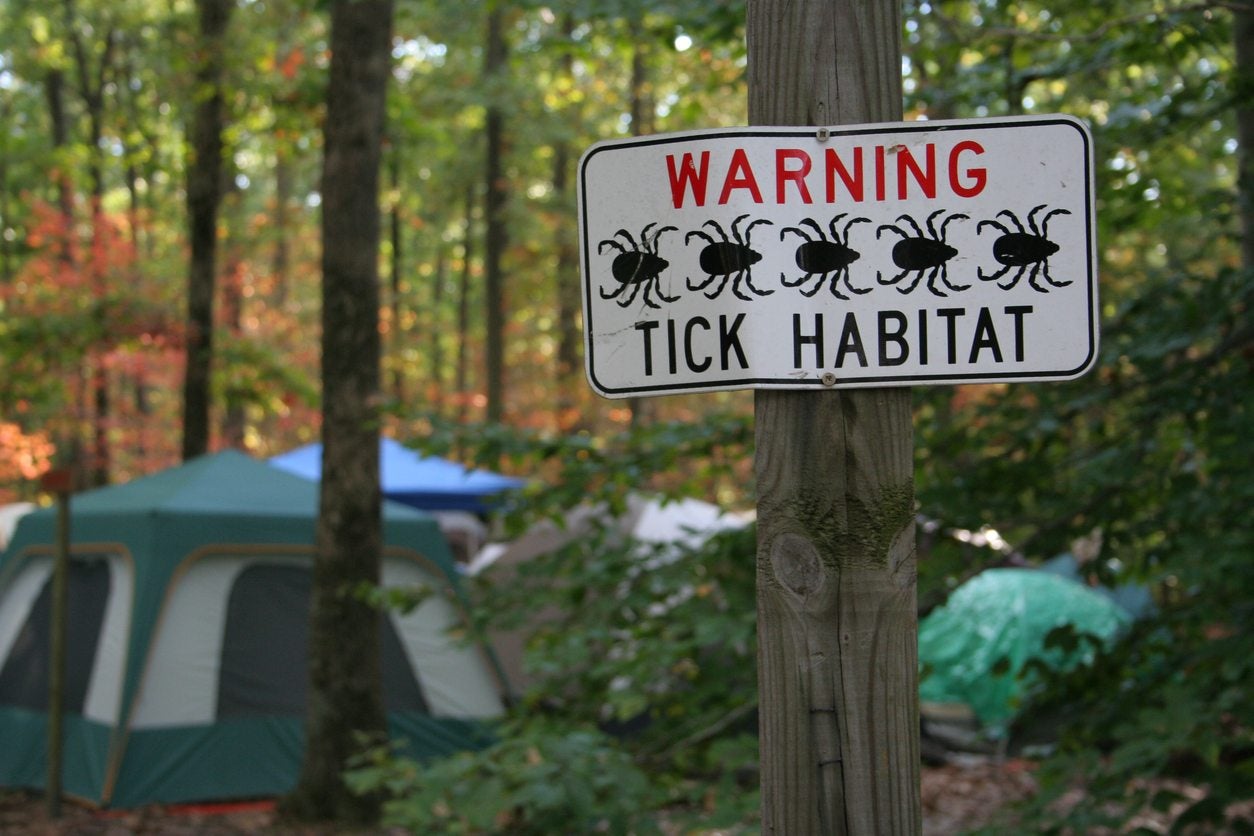Applying Acaricide Insecticides: Using An Acaricide For Tick Control

Many homeowners in regions where Lyme disease is common are concerned about ticks. The deer tick (Ixodes scapularis) is the species that transmits Lyme disease in the eastern and central United States, while the western blacklegged tick (Ixodes pacificus) transmits Lyme disease in the western United States. A bite from an immature tick, called a nymph, is the most common source of Lyme disease infections, but adult ticks can also transmit the disease. If you live near a wooded area where these ticks are present, you may have considered chemical control methods for ticks. Acaricides are one option. Read on to learn more about how to use an acaricide for ticks.
What are Acaricides?
Acaricides are pesticides that kill ticks and mites, closely related groups of invertebrates. They are one part of a strategy for controlling ticks around homes and should be combined with measures to reduce tick habitats. An acaricide for tick control will include active ingredients like permethrin, cyfluthrin, bifenthrin, carbaryl, and pyrethrin. These chemicals are sometimes called acaricide insecticides, but ticks are arachnids, not insects, so this isn’t technically accurate. Some acaricides are available for homeowners to use. Others can only be sold to licensed applicators, so you’ll need to hire a professional to apply them. Diatomaceous earth is a non-chemical alternative that may help to suppress tick populations.
How to Use an Acaricide
There are two main ways to use an acaricide for tick control. First, the acaricide can be applied to a whole area. Second, it can be used to treat the hosts that carry ticks, including rodents and deer. The best time for an area-wide acaricide application is in mid-May through mid-June, when ticks are in the nymphal stage. Another application can be done in the fall to target adult ticks. Acaricides can be applied to tick habitats around a residence including wooded areas and their borders, stone walls, and ornamental gardens. Using acaricides in lawns is only recommended when residential areas are located directly next to woodlands or include wooded sections. To treat deer tick hosts, rodent bait boxes and deer feeding stations can be placed on a property. These devices attract the animals with food or nesting material, then dose them with an acaricide. The process is harmless to the animal and can help suppress tick populations in the area. Permits may be needed, so check with local authorities before setting them up. Other ways to keep ticks away from the home include the following strategies:
- The deer tick mainly feeds on white-tailed deer and on rodents, so reducing the attractiveness of your yard for these critters can also reduce the tick population. Installing a fence around the property can help keep deer out.
- Tall grass, brush, leaf piles, and debris all provide tick habitat, so keep grass mowed and remove brush around the home. Neatly stack wood and consider eliminating stone walls and wood piles. Adding a 3 foot (91 m.) wide strip of mulch or gravel can keep ticks from crossing into the garden from a nearby wooded area.
Whatever measures you are taking, be sure to also check yourself for ticks after enjoying the types of areas where ticks are found.
Sign up for the Gardening Know How newsletter today and receive a free copy of our e-book "How to Grow Delicious Tomatoes".
Ilana Goldowitz Jimenez is a scientific and agricultural writer with a B.S. in Plant Sciences from Cornell University and a PhD in Chemical Biology and Infectious Disease from Harvard University.